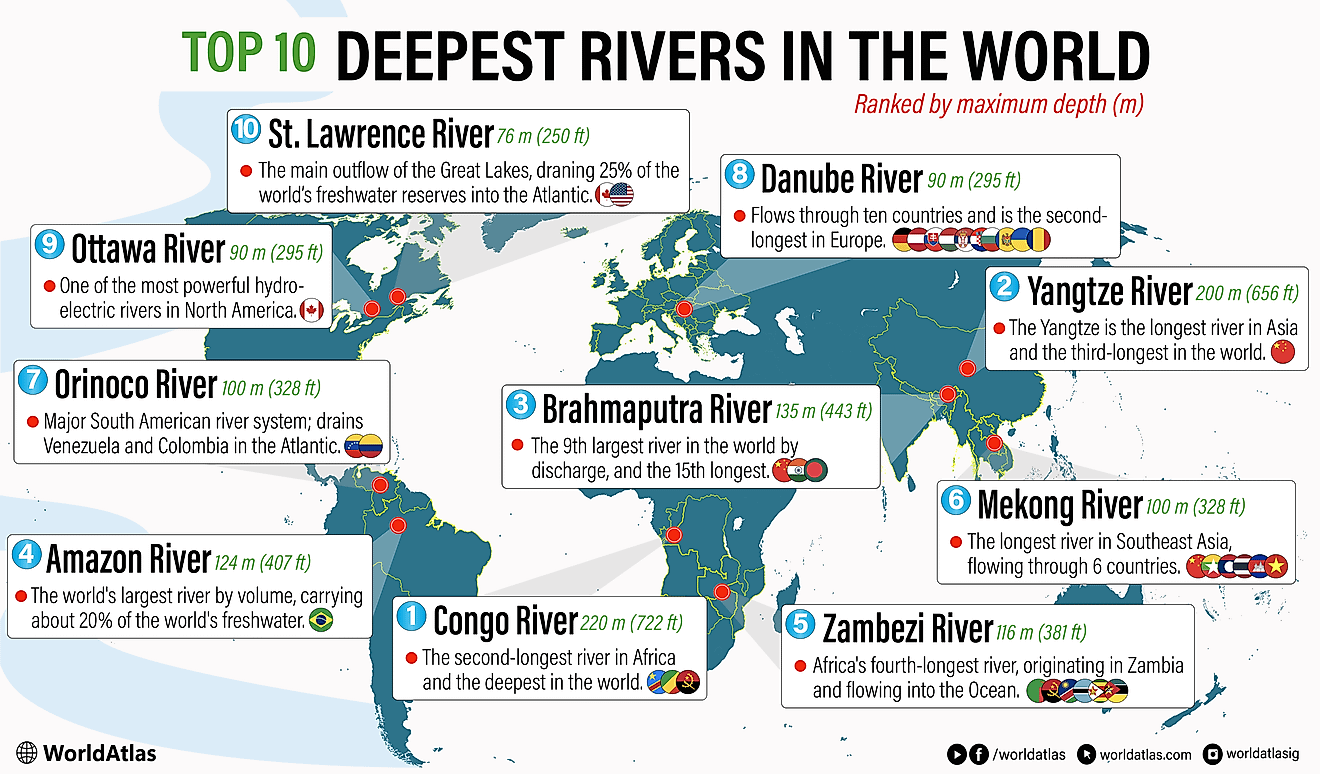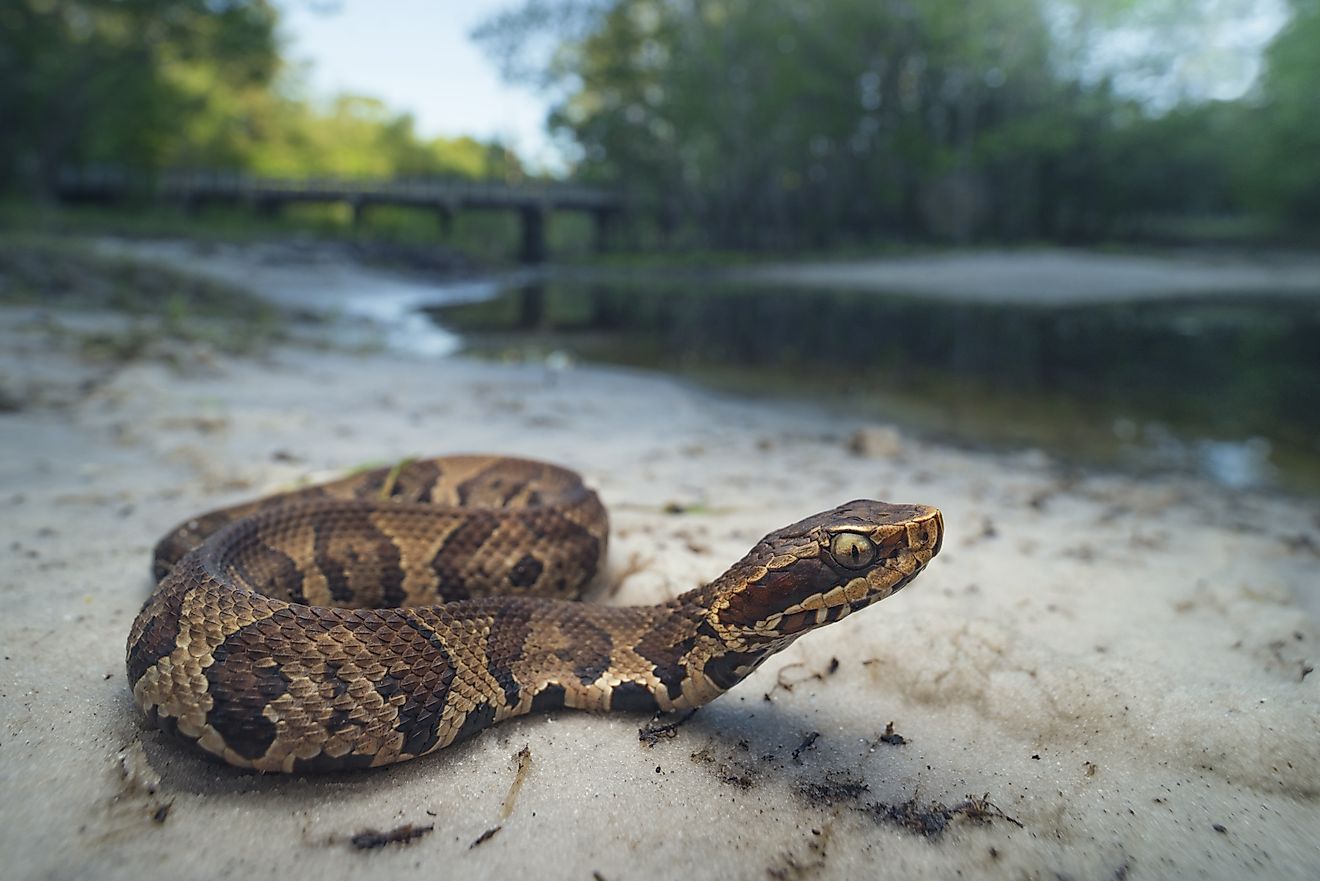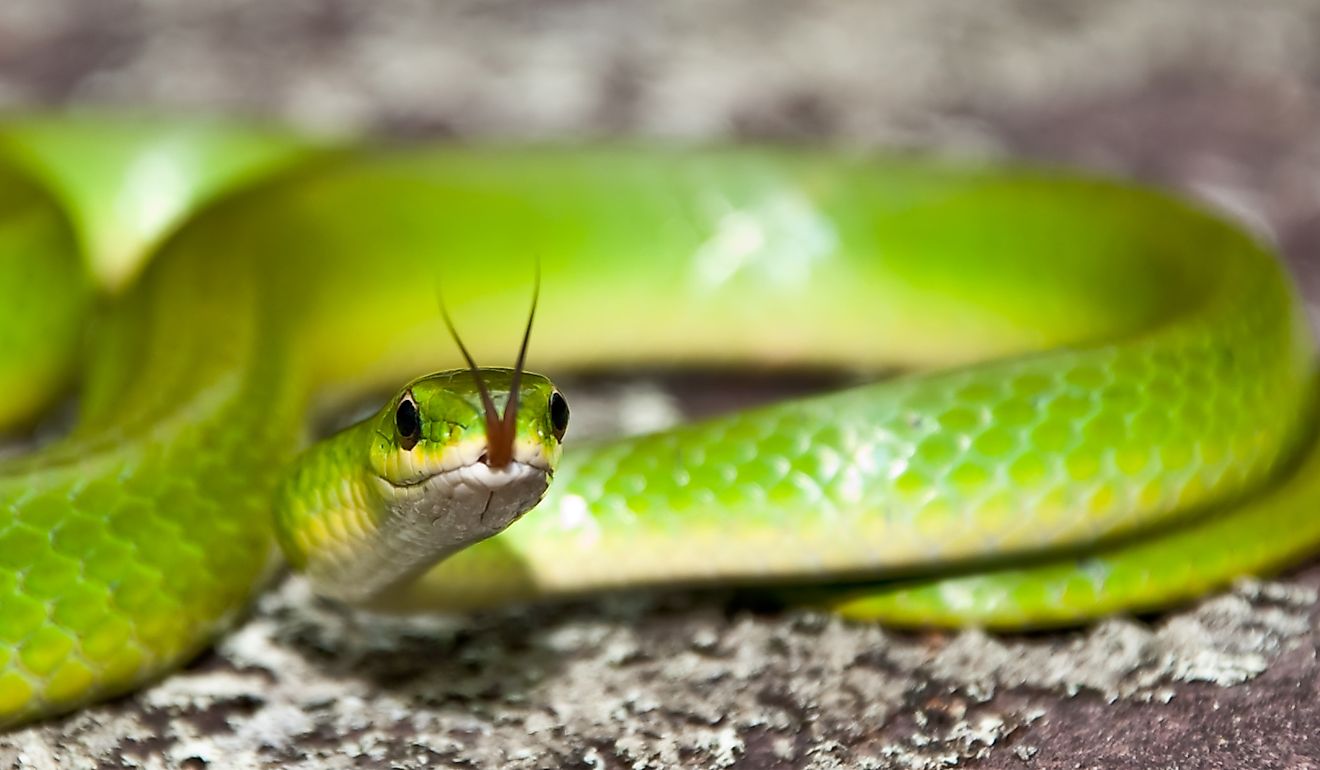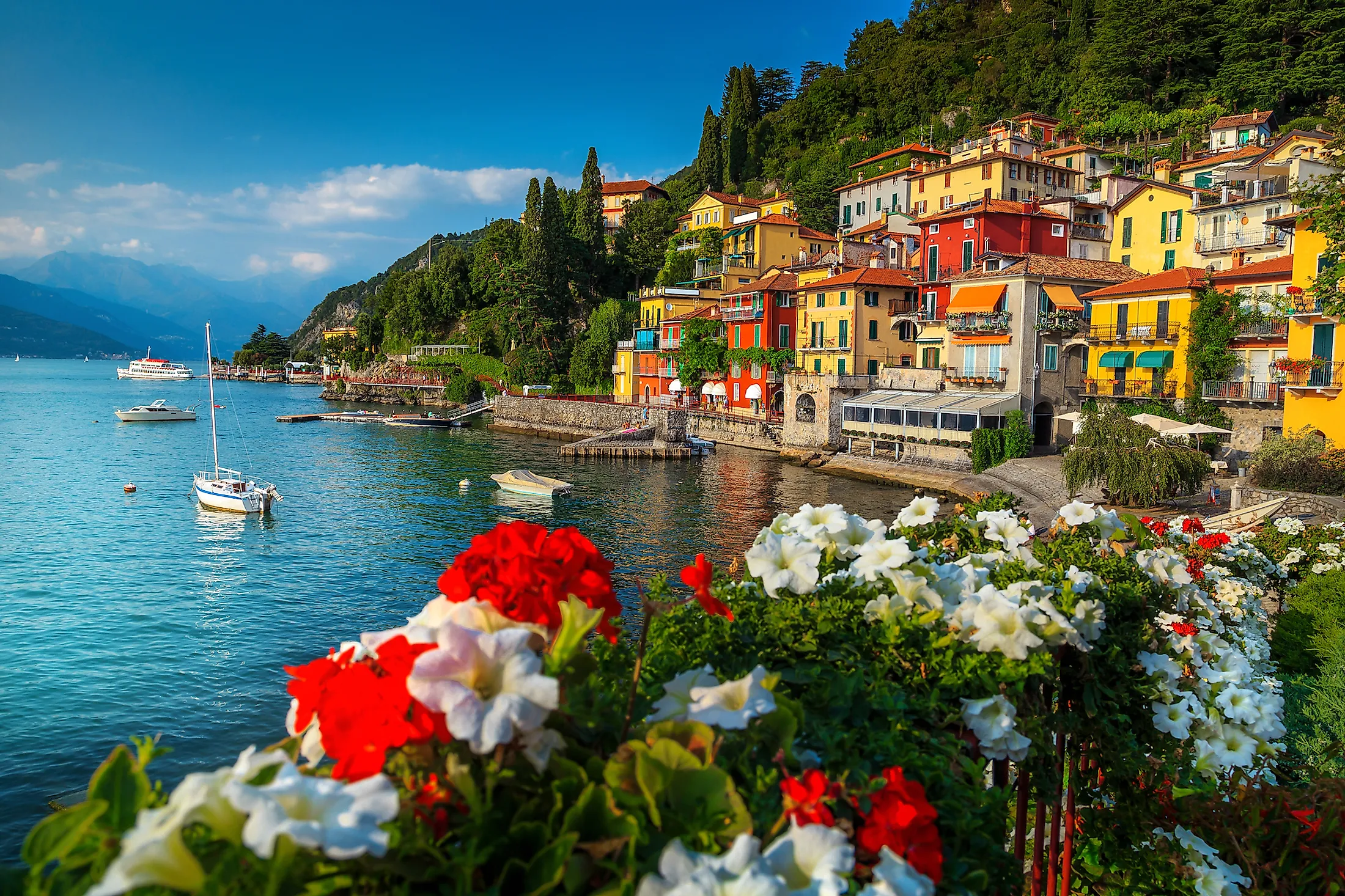
Lake Como
Lake Como is one of the more visually stunning lakes in the world. It can be found in the Lombardy area of northern Italy and is the third largest lake in the country and has a surface area of 146 km2. The lake is popular with tourists and has been used to film movie scenes.
Geography
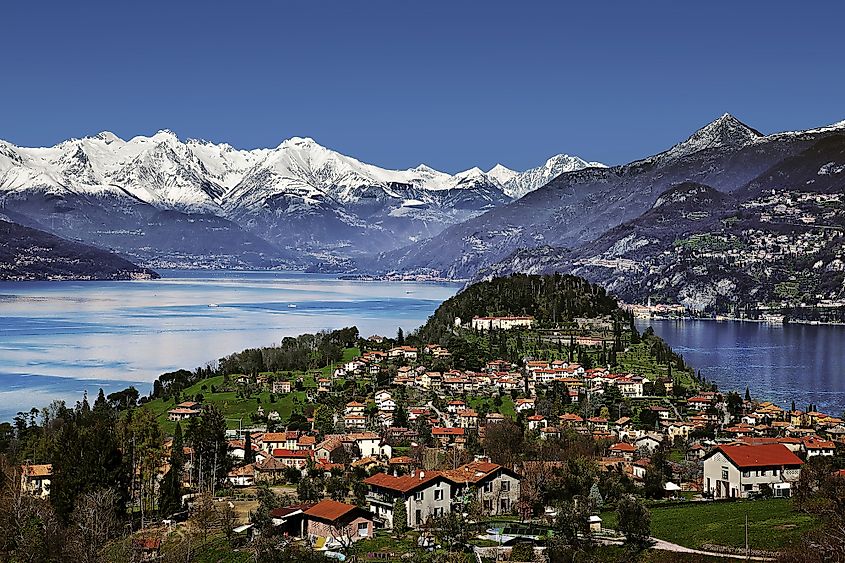
Lake Como sits below the foothills of the Alps, at an elevation of 198 m above sea level. Como is the third largest lake in Italy, and the fifth deepest in all of Europe, with an average depth of 154 m, but a maximum depth of 425 m. The lake is so deep, in fact, that it reaches 200 meters below sea level, despite its high elevation.
The lake is considered glacial, which is part of the reason the colour is so vibrant in the lake. The main source of water to the lake is the river Adda, which enters the lake from the north end. One of the more unique aspects of the lake is the shape itself, as it has three main branches, which form an inverted Y shape. The area between the two main branches is known as the Triangolo Lariano, and is mainly pre-alpine mountains, with peaks and valleys looking over the lake. More generally, the edges on the lake are more rocky than flat, and hills fall steeply to the water's edge. These hills are lush with vegetation, with a variety of trees, creating a rich, abundant landscape that is both full of life and visually stunning.
Attractions
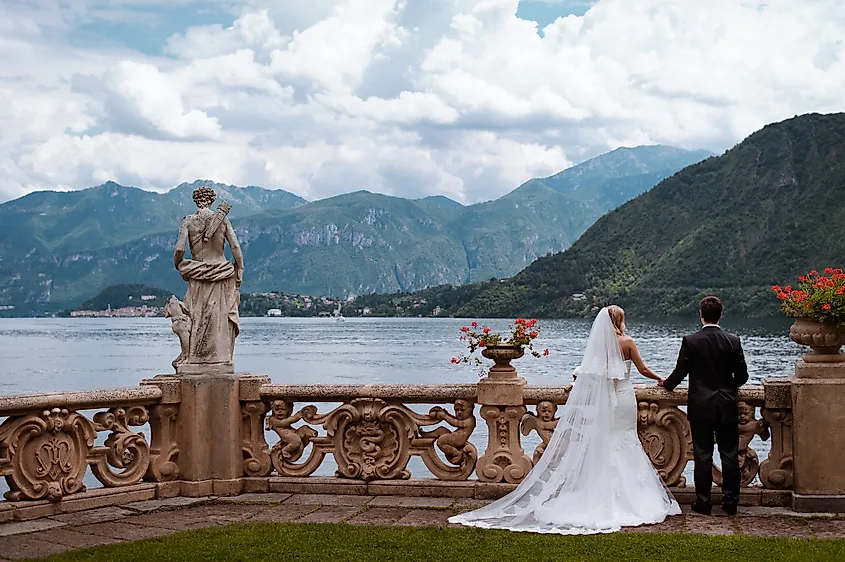
The beauty and location of the lake has made it extremely popular with tourists and residents. Villas and resorts fill the hillsides all along the lake, with bright pops of colour and stunning views. Both locals and visitors from all over the world come to stay in some of these exquisite homes or walk along the waterfront paths. The scenery is so impressive, in fact, that Lake Como has been used as a TV and movie set on numerous occasions, from Attack of the Clones, to Ocean’s Twelve, and perhaps most famously Casino Royale. The lake is also the setting for the bicycle race known as the Tour of Lombardy.
Flora
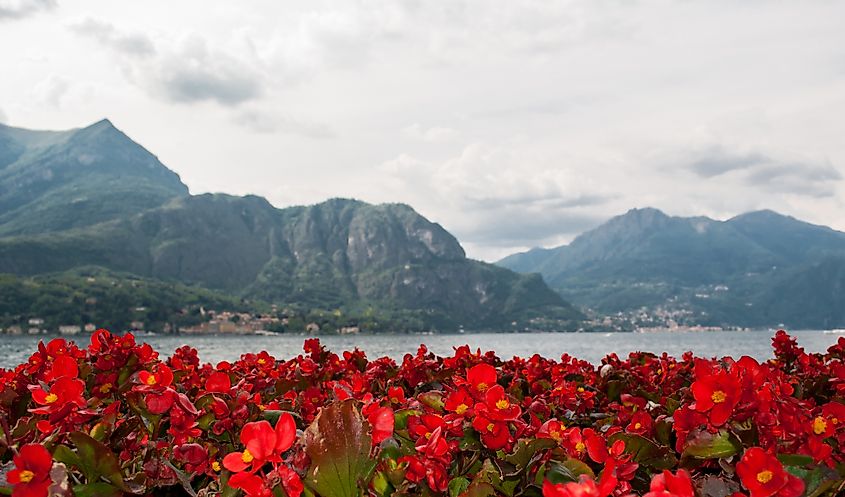
Because of the mild humid climate on the lake, nature thrives in Como. The hills and alpine ridge that surround the lake block the wind and elements, creating a calm and temperature area. The lake banks are full of traditional Mediterranean plants, due to the climate pocket here. Common tree species include the cypress and laurel, which are abundant along the hilly shores. Also present are azaleas, camellias, magnolias, some variants of palm, and rhododendron bushes. These are found especially in areas of the lake that are slightly wetter, where the plant life veers towards the tropical, or subtropical even more. This added moisture tends to mean an increase in florals, as well as fruit bearing plants like citron trees and orange trees. The higher mountain ranges have plants more equipped for less-protected climates, such as the sturdy chestnut tree.
Fauna
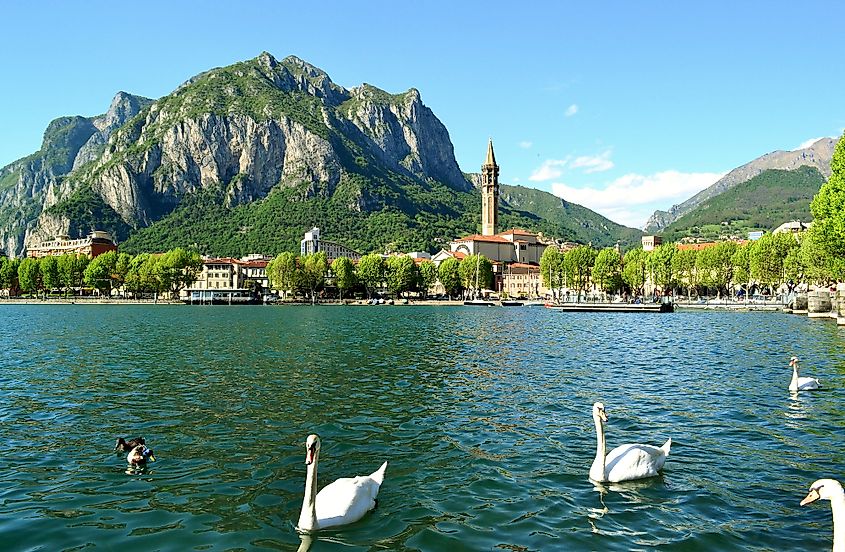
A favoured myth in the region is of the giant reptile-like creature that lives deep in the depths of Lake Como, and is often referred to as a Lariosauro (or lake monster). Much like the Loch Ness Monster, however, this rumour has never been substantiated and is likely just folklore fun. There are, however, some 20 or so species of fish that can be found in the lake. Fish types such as Pike, Zander, Perch, Carp, Whitefish, Lake Trout, Shad, Chub, Tench, Bass, Wels Catfish, Grayling and Char can all be found here, many of which are eaten in and around the area.
Climate Change And Lake Como
Unfortunately, the beauty of Lake Como is under threat due to climate change. As of 2021, the lake had seen a drop of some 3 feet along its water line, meaning a total of gallons and gallons of water loss across the entire lake area. A lack of ice melt and precipitation is meaning less water flowing into the lake. Since the glacier has reduced so much in size ove3r the last 50 years, there is less and less glacial runoff that feeds the lake. Additionally, increased temperatures also speed evaporation. The drop in the waterline is dangerous, as it can cause eroding and landslides in the hills and shores surrounding the lake. This water reduction is also causing a decrease in fish population which affects both the natural ecosystem and the local fishing economy. Without action, climate change may threaten the very beauty and existence of lakes such as Como, ruining their ecosystems or completely driving them out of existence.









